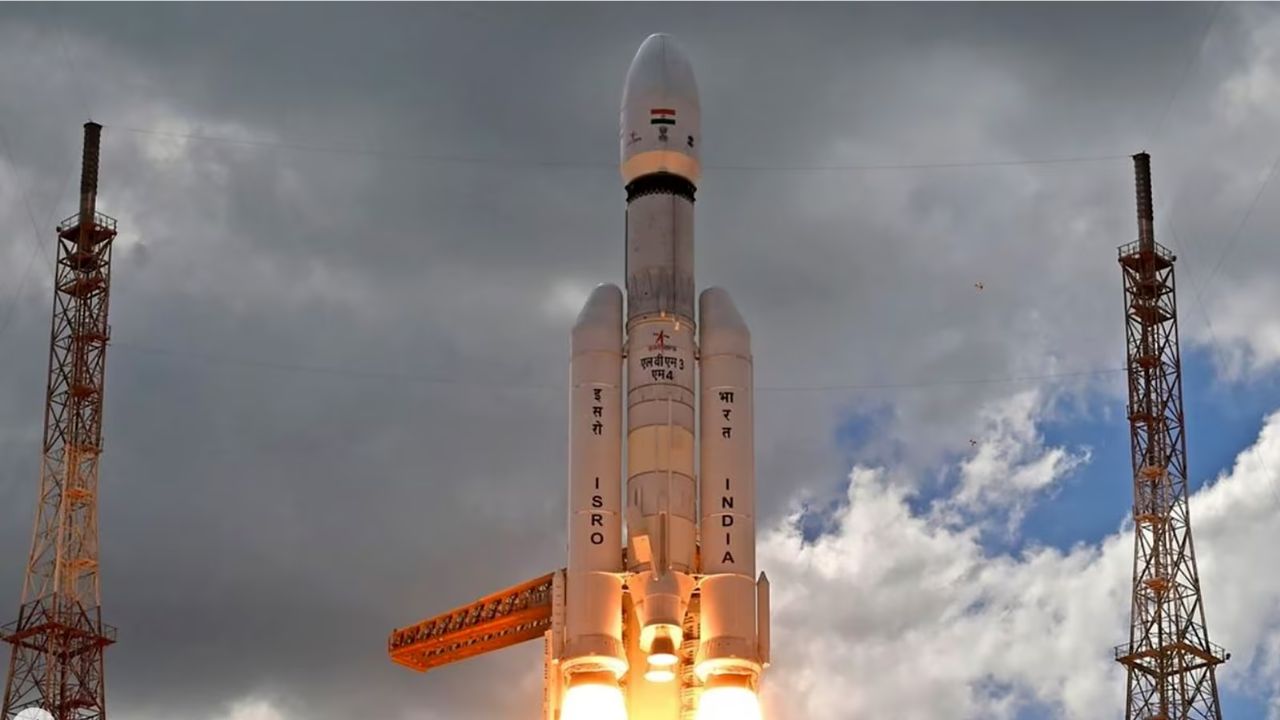Chandrayaan-3’s Upcoming Lunar Landing: The south pole of the Moon, where water ice and other resources await in the shadows of deep craters, is the new frontier of lunar exploration. After the failures of its antecedent, the Chandrayaan-3 mission is about to attempt a historic landing in this challenging region. In the coming years, Chandrayaan-3 will make many new acquaintances in Israel, China, Japan, Russia, and the United States.
Near the south pole of the Moon, ISRO’s Chandrayaan-3 is about to attempt a landing in a region that is largely unexplored but promising in terms of the availability of water and other resources. There is a great deal of interest in the highlands near the south pole of the Moon because the sunlight descends tangentially here, and some of the deeper impact craters are permanently dark. The only locations on the Moon where water ice can exist on the surface without evaporating into the tenuous lunar atmosphere are at the bases of these craters.
Future lunar missions will not need to excavate the surface to access this valuable resource, but they will have to traverse treacherous terrain to reach the depths of lunar craters. However, it may be possible to extract the water from the lunar regolith. The Luna 25 mission, which was intended to investigate the regolith and determine the amount of water just beneath the surface, crashed into the Moon a day prior to its landing attempt.
Missions to the Moon in the past have primarily focused on the equatorial regions on the near side. The majority of Soviet and American missions to the Moon occurred during the height of the space race in the late 1960s and early 1970s, when multiple landers were sent to the lunar surface annually. Some of the earliest missions were impactors, with the capability and knowledge required for a controlled landing increasing over time.
Chandrayaan-3’s Upcoming Lunar Landing: Remembering Past Missions That Successfully Reached the Moon’s Surface
China began a new era of lunar exploration on October 24, 2007, when it launched the Chang’e 1 orbiter to the Moon. ISRO’s first lunar mission a year later brought India into the action. On November 14, 2008, the Chandrayaan-1 impactor arrived at the Shackleton crater at Jawahar Point, which is located near the lunar south pole. In 2010, the Chang’e 2 orbiter followed. China will then dispatch Chang’e landers to the Moon in 2013, 2019, and 2020, with successful missions.
Even before the Chandrayaan-1 mission landed on the moon’s surface, India and Russia were already planning a follow-up mission. India was responsible for the orbiter and rover, while Russia was responsible for the lander. ISRO decided to construct its own lander following the 2011 failure of the Phobos-Grunt mission. The Chandrayaan 2 lander crashed into the Moon on September 6, 2019 as a result of software bugs and design defects.
ISRO has taken a number of precautionary measures to ensure the success of the mission in light of the lessons learned from the previous failure. Unnecessary parametric constraints have been removed from the software, the target landing area has been expanded, the legs have been strengthened, and the entire lander has been rigorously tested. Chandrayaan-2 acquired high-resolution data of the lunar surface, which is stored on Chandrayaan-3 so that the spacecraft can use it as a reference point to orient itself at any point. So far, the mission has been proceeding precisely as planned.
ISRO, CNSA, Roscosmos, NASA, and JAXA, as well as private spaceflight companies, have missions planned for the south pole of the Moon. On April 11, 2019, the Israeli Beresheet lander plummeted into the Moon, a few months before Chandrayaan 2. Earlier this year, the Japanese company iSpace’s Hakuto lander also plummeted into the Moon. Roscosmos chief Yuri Borisov has indicated that Russia will continue to compete in the Lunar Race despite the loss of the Luna 25 spacecraft.
The Russian Federation has planned a series of lunar missions, including an orbiter and two landers. These missions are a joint effort with China to establish a lunar research station near the Moon’s south pole. The Russian and Chinese International Lunar Station is intended to compete with the American Artemis basecamp. With the Artemis 3 mission, which is presently scheduled for 2025, NASA plans to return American boots to the Moon. Artemis 3 is anticipated to be the first crewed mission of the SpaceX Starship, which must be prepared in time. The Artemis 3 candidate impact sites are all located near the Shackleton crater at the Moon’s south pole.
With the loss of Luna 25, ISRO’s Chandrayaan-3 mission will be the only spacecraft to conduct groundbreaking research into the lunar regolith, tenuous atmosphere, and seismic activity in the Manzinus crater region. Sensitive seismometer measurements are one of the few methods available to scientists for investigating the interior of the Moon. The valuable data collected by Chandrayaan-3 will be made accessible to the global scientific community and will be crucial for future lunar surface missions.
In collaboration with a number of private spaceflight companies, NASA is expanding its capability to deliver payloads to the lunar surface, with the first launch of Commercial Lunar Payload Services (CLPS) scheduled for November 15 of this year. Israel will attempt a controlled landing once more with the Beresheet 2 mission in 2024, followed by the second CLPS mission, the Volatiles Investigating Polar Exploration Rover (VIPER), in November 2024. The Smart Lander for Investigating the Moon (SLIM) spacecraft will be launched by Japan in 2023, followed by the Hakuto II and III missions in 2024 and 2025, respectively. ISRO also recently announced a partnership with JAXA for the Lunar Polar Exploration Mission (LUPEX) mission, which will not launch until at least 2024.
To date, every mission to the lunar surface has been scientific in nature. Now, humanity has higher ambitions on the lunar surface, and wants to mine the local resources, set up propellant plants, use the low gravity environment for manufacturing capabilities not possible on Earth, set up astronomical observatories on the far side of the Moon that is not affected by atmospheric disturbance, and use the Moon as a stepping stone for deep space missions to the outer Solar System. In the coming years, Chandrayaan-3 will make many new acquaintances for this reason.


















